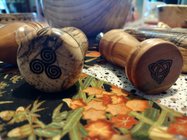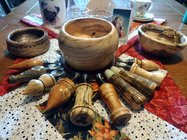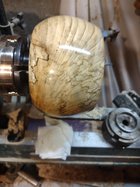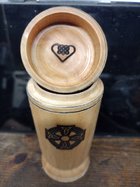I have become increasingly disenchanted with my turning skills particularly in view on the marvelous work I see here. Therefore I have decided to go back to the beginning and start over.
Sharpening- Started using the pattern templates from Carl Ford. Www.carlford.us. My bowl and detail gouges now cut. For the skew, I followed Robo Hippy’s advice and set his platform to 3. I t wasn’t far off from where I was so I did not take off much steel but it really improved my cuts and positioning.
Now I am in phase 2. I have decided to turn wine stoppers until I have mastered them. Another dozen or so and I will be ready to move on to weed pots, candle holders, and finally small bowls. I’ve attached a couple pics of my progress so far.


You folks inspire me to be more than I am. Thanks. And thanks for listening.
Pat
Sharpening- Started using the pattern templates from Carl Ford. Www.carlford.us. My bowl and detail gouges now cut. For the skew, I followed Robo Hippy’s advice and set his platform to 3. I t wasn’t far off from where I was so I did not take off much steel but it really improved my cuts and positioning.
Now I am in phase 2. I have decided to turn wine stoppers until I have mastered them. Another dozen or so and I will be ready to move on to weed pots, candle holders, and finally small bowls. I’ve attached a couple pics of my progress so far.


You folks inspire me to be more than I am. Thanks. And thanks for listening.
Pat





